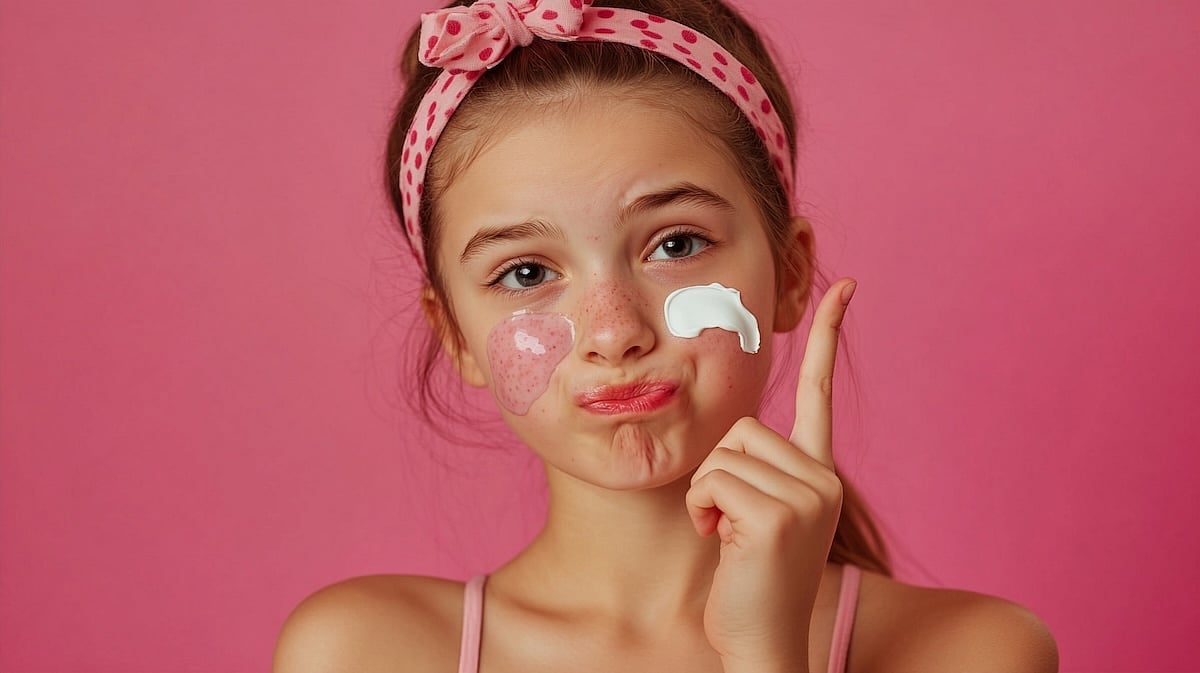Get Healthy!

- Dennis Thompson
- Posted June 10, 2025
Advice In Teen TikTok Beauty Videos Can Lead To Skin Damage
The TikTok video shows a teenage girl in braces applying a series of 14 beauty products to her face, an arsenal that costs nearly $350 all told.
It’s one of many such videos where girls share their beauty regimens — but then something goes wrong.
“This is what my skin looks like. It is very glowy right now, I love it! But also, I just had some allergic reaction to something that I tried, so ignore how red my face is,” says the girl, as her skin turns crimson and inflamed.
“I don’t know what’s happening. But if anybody knows how to get it to stop burning, that would be greatly appreciated, because it actually hurts a lot,” the girl tells her audience.
This real-life example captures the genuine risks that lurk behind the glamor of “get ready with me” TikTok videos, researchers argue in a new study.
Popular TikTok videos featuring teens’ personal skin care routine frequently feature products that carry a high risk of skin irritation and allergy, researchers reported June 9 in the journal Pediatrics.
The top-viewed videos contained an average of 11 potentially irritating active ingredients, researchers found.
These could cause a higher risk of skin irritation, sun sensitivity, and a full-blown allergic reaction, researchers said.
“That high risk of irritation came from both using multiple active ingredients at the same time, such as hydroxy acids, as well as applying the same active ingredient unknowingly over and over again when that active ingredient was found in three, four, five different products,” lead investigator Dr. Molly Hales said in a news release. She's a postdoctoral research fellow in dermatology at Northwestern University Feinberg School of Medicine.
In another video noted in the study, a teenager applied 10 products to her face in six minutes.
“As she’s applying the products, she begins to express discomfort and burning, and in the final few minutes, she develops a visible skin reaction,” senior researcher Dr. Tara Lagu said in a news release. She's an adjunct lecturer of medicine and medical social sciences at Northwestern University.
For the study, Hales and Lagu each created a TikTok account in which they reported their age as 13.
The “For You” tab made recommendations, and the researchers liked and saved videos featuring youth skin care regimens.
As a result, the TikTok algorithm started sending more and more similar suggestions, until the researchers had collected a combined total of 100 videos from 82 creators.
About a third of the videos (31%) featured girls 13 and younger, and the rest 14- to 18-year-olds.
The girls’ regimens featured an average of six products costing an estimated $168 on average, researchers said. In some videos, the girls presented an array of products that cost more than $500.
Taking a closer look, researchers found that the 25 most-viewed videos featured products containing an average of 11 potentially irritating active ingredients. Some carried as many as 21.
The most common active ingredients across all products were alpha-hydroxy acids (AHAs) like citric acid, lactic acid and glycolic acid. Citric acid was the most common ingredient, found in 29% of all products.
AHAs help treat acne, but can cause skin irritation in girls without acne, “particularly when multiple such products are used together,” researchers wrote. AHAs and beta-hydroxy acids also increase the risk of sun sensitivity.
More than half of all products also contained added fragrance, which can cause irritation and allergic reaction, researchers said.
Worse, only 26% of the portrayed skin care regimens contained sunscreen, which is important for skin health, researchers noted.
Overall, the videos portray expensive and time-consuming regimens that “encourage young girls to pursue unattainable ideals of physical perfection under the guise of ‘self-care,’ ” researchers wrote.
Many of the videos in the genre dubbed “Get Ready With Me” show girls waking as early as 4:30 a.m. to get ready for school though multistep makeup routines, researchers noted.
“It's problematic to show girls devoting this much time and attention to their skin,” Hales said. “We're setting a very high standard for these girls.”
These videos also portray a coded vision of beauty that emphasizes whiteness, using words like “porcelain,” “glowy” and “glassy” in an aspirational way, researchers wrote.
“We saw that there was preferential, encoded racial language in some cases that really emphasized lighter, brighter skin,” Lagu said.
Hales agreed.
“The pursuit of health has become a kind of virtue in our society, but the ideal of ‘health’ is also very wrapped up in ideals of beauty, thinness and whiteness,” Hales said. “The insidious thing about ‘skin care’ is that it claims to be about health.”
More information
The Cleveland Clinic has more on skin care product allergies.
SOURCE: Northwestern University, news release, June 9, 2025; Pediatrics, June 9, 2025






